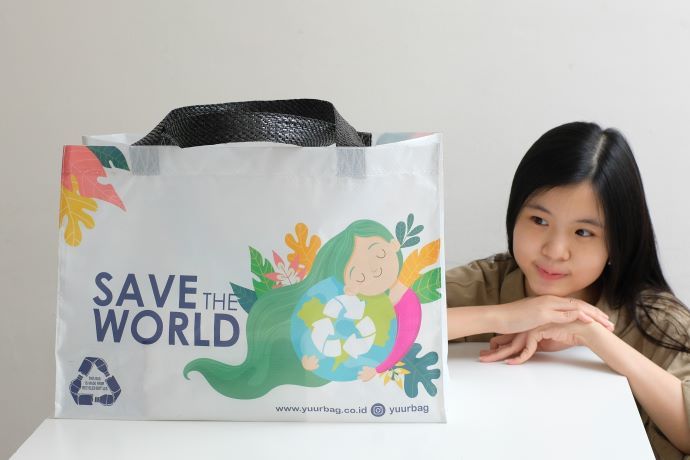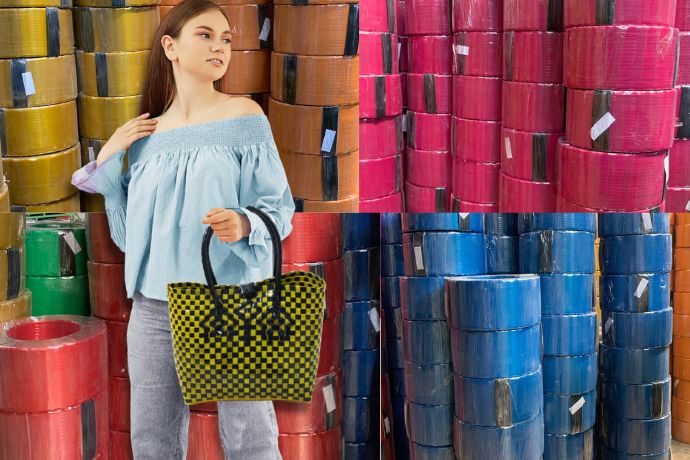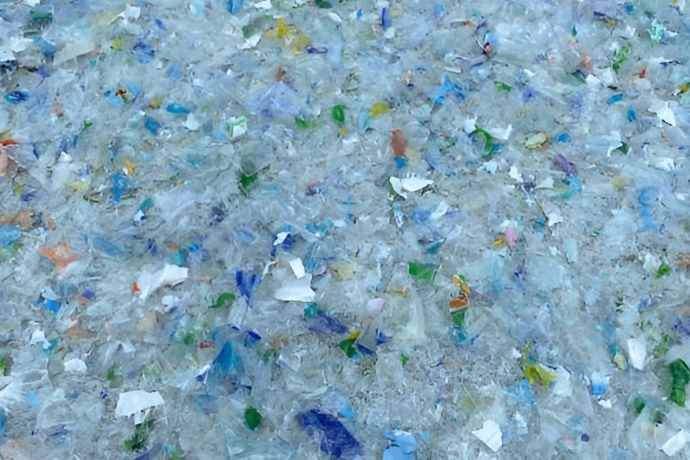3 Considerations of Using Recycled HDPE in Pipe Manufacturing
Key Takeaways:
- Recycled HDPE pipes can perform like virgin—if processed with the right techniques and stabilizers.
- Stabilization is key to long-term durability — Replenishing antioxidants during recycling protects HDPE pipes from UV and thermal degradation, extending service life even in harsh environments.
- It's a win-win for cost and sustainability — Recycled HDPE reduces raw material costs and plastic waste, while keeping your production aligned with global sustainability goals.
As a pipe manufacturer, you might be considering incorporating recycled high-density polyethylene (HDPE) into your production process.
This move can significantly contribute to sustainability efforts, reducing plastic waste and also reliance on virgin materials.
However, there are several considerations that you need to fully understand before using recycled HDPE in pipe manufacturing.
This article will discuss 3 important considerations for using recycled HDPE in pipe manufacturing.
Enjoy reading.
Properties of Recycled HDPE Pipes
1. Tensile Strength
The tensile strength of HDPE pipes is a critical factor in determining their ability to withstand various loads and stresses without failing.
This property is vital for ensuring the long-term durability and safety of pipes used in infrastructure projects.
When you decide to use recycled HDPE, it’s essential to understand how its tensile strength compares to that of virgin HDPE and how proper processing can maintain its integrity.
Key Points to Consider
- Comparative Strength:
Studies indicate that recycled HDPE pipes, when properly processed, can exhibit tensile strengths that are nearly equivalent to those made from virgin HDPE.
For example, Nguyen et al. (2022) demonstrated that recycled HDPE pipes maintained tensile strengths close to those of their virgin counterparts.
This suggests that with the right processing techniques, recycled HDPE can meet the structural requirements for most applications.
The key to achieving comparable tensile strength lies in advanced processing techniques.
These include controlled heating, extrusion processes, and the use of stabilizers that enhance the molecular structure of the recycled HDPE.
By optimizing these processes, you can ensure that the mechanical properties of recycled HDPE are preserved, allowing for the production of pipes that are just as reliable as those made from virgin material.
- Material Quality and Consistency:
The quality of recycled HDPE can vary depending on the source materials and the contamination levels they contain.
High-quality recycled HDPE typically comes from well-sorted, clean post-consumer waste, ensuring minimal impurities that could affect its tensile strength.
Langgeng Jaya Group, for instance, is known for providing high-quality recycled HDPE granules and pellets, which are consistent in quality and performance.
- Performance in Real-World Conditions:
Real-world applications have shown that recycled HDPE pipes perform well under various conditions, including high pressure and extreme temperatures.
Nguyen et al. (2022) noted that the tensile strength of recycled HDPE pipes was sufficient to handle the stresses encountered in typical infrastructure settings.
This reliability makes recycled HDPE a viable alternative to virgin HDPE.
2. Stress Crack Resistance
Stress crack resistance (SCR) is a critical property of HDPE pipes, determining their ability to withstand prolonged mechanical stress and environmental conditions without cracking.
This property is especially important for pipes that are buried underground or exposed to varying temperatures and pressures.
Key Points to Consider
- Importance of SCR:
SCR measures the material's ability to resist the slow propagation of cracks under stress.
For HDPE pipes, a high SCR ensures long-term durability and reliability, especially in demanding environments.
Pipes with high SCR are less likely to fail due to environmental stressors, making them suitable for applications such as water distribution, gas pipelines, and sewage systems.
- Impact of Recycling on SCR:
Recycled HDPE can have varying SCR due to the potential presence of contaminants and variations in the polymer matrix from different recycling processes.
However, advancements in recycling techniques have significantly improved the SCR of recycled HDPE.
According to Nguyen et al. (2021), recycled HDPE, when properly processed with appropriate additives, can achieve SCR comparable to virgin HDPE.
- Enhancement Techniques:
The addition of specific stabilizers and antioxidants during the recycling process can enhance the SCR of recycled HDPE.
These additives help to maintain the integrity of the polymer chains, reducing the likelihood of crack initiation and propagation.
Advanced processing techniques, such as controlled extrusion and melt blending, can improve the dispersion of additives within the polymer matrix, further enhancing SCR.
Research by Jeon et al. (2008) and others has shown that these methods can significantly improve the performance of recycled HDPE.
- Field Performance and Case Studies:
Field studies and practical applications have demonstrated that recycled HDPE pipes with enhanced SCR perform well under various conditions.
These pipes have shown resilience in infrastructure projects, providing a sustainable and cost-effective alternative to virgin HDPE.
For example, a case study by Pluimer et al. highlighted the successful use of recycled HDPE pipes in a municipal water distribution system, where they exhibited excellent SCR and overall durability.
3. Antioxidant Depletion
Antioxidants are crucial for maintaining the stability of HDPE against UV radiation and thermal degradation.
The rate at which these antioxidants deplete can significantly impact the durability of recycled HDPE pipes.
Key Points to Consider
- Role of Antioxidants:
Antioxidants prevent the oxidative degradation of HDPE by neutralizing free radicals generated by UV exposure and thermal stress.
This protection is essential for maintaining the pipe’s mechanical properties and extending its service life.
There are primary antioxidants that intercept free radicals and secondary antioxidants that decompose hydroperoxides, both of which are used in HDPE formulations to ensure comprehensive protection.
- Impact of Recycling on Antioxidants:
During the recycling process, the initial levels of antioxidants in HDPE can be reduced. Ensuring that recycled HDPE retains sufficient antioxidant levels is critical for its long-term stability.
Studies by Jeon et al. (2008) and Rowe et al. (2010) have shown that recycled HDPE can maintain effective antioxidant levels when appropriate stabilizers are added during recycling.
These studies indicate that with proper formulation, recycled HDPE can have antioxidant depletion rates similar to those of virgin HDPE.
- Enhancement Techniques:
Adding new antioxidants during the recycling process is essential to compensate for any depletion that occurs.
This re-stabilization ensures that recycled HDPE maintains its protective qualities over its service life.
Advanced processing techniques, such as compounding and melt blending, ensure uniform distribution of antioxidants within the recycled HDPE matrix, enhancing its resistance to oxidative degradation.
- Field Performance and Case Studies:
Long-term studies and simulations have demonstrated that recycled HDPE pipes with adequate antioxidant stabilization perform well in field conditions, resisting degradation and maintaining structural integrity.
For instance, research conducted by Thomas et al. highlighted the effective performance of stabilized recycled HDPE in harsh environmental conditions.
Practical applications, such as those documented by the Transportation Research Board, show that pipes made from recycled HDPE with enhanced antioxidant levels have successfully been used in various infrastructure projects, providing a reliable and sustainable solution.
Environmental and Economic Benefits
Using recycled HDPE in your pipe manufacturing process not only addresses environmental concerns but also offers significant economic advantages.
1. Environmental Benefits
Reduction in Plastic Waste: By using recycled HDPE, you reduce plastic waste in landfills and oceans, mitigating the environmental impact of plastic pollution.
Studies have shown that recycling HDPE significantly lowers the carbon footprint compared to producing virgin HDPE.
Resource Conservation: By reusing plastic waste, you help conserve petroleum resources, reducing the need for raw material extraction and refining.
This effort is vital for promoting sustainable resource management. For more on the environmental impacts, see Dormer et al.'s work in the Journal of Cleaner Production.
2. Economic Benefits
Cost Efficiency: Recycled HDPE is generally cheaper than virgin HDPE, which can lead to substantial cost savings in large-scale infrastructure projects.
This economic advantage is particularly beneficial for regions with limited public works budgets.
Market Competitiveness: The growing demand for sustainable products is driving the development of cost-effective recycled HDPE solutions, enhancing the market competitiveness of products made from recycled materials.
For an in-depth look at the economic aspects, explore Vasile and Pascu's study in the Journal of Polymers and the Environment.
Conclusion
By incorporating recycled HDPE into your pipe manufacturing processes, you can produce high-quality, durable, and reliable pipes while contributing to environmental sustainability and achieving cost savings.
The technical advancements in processing recycled HDPE ensure that its mechanical properties, including tensile strength, stress crack resistance, and antioxidant stability, meet the stringent requirements of various applications.
Embracing recycled HDPE is not only a responsible choice but also a strategic move to enhance your market competitiveness and support the global push towards a more sustainable future.



